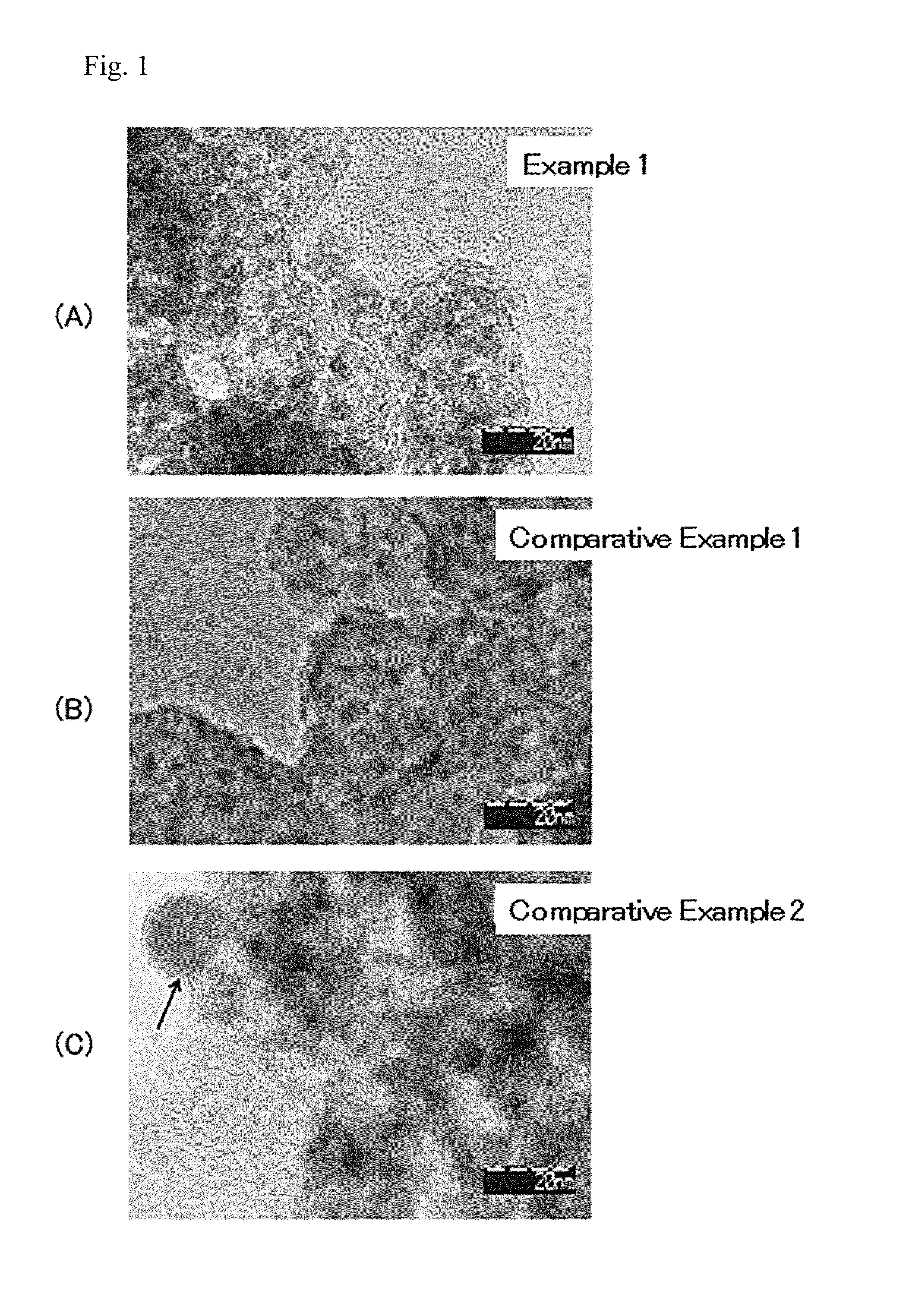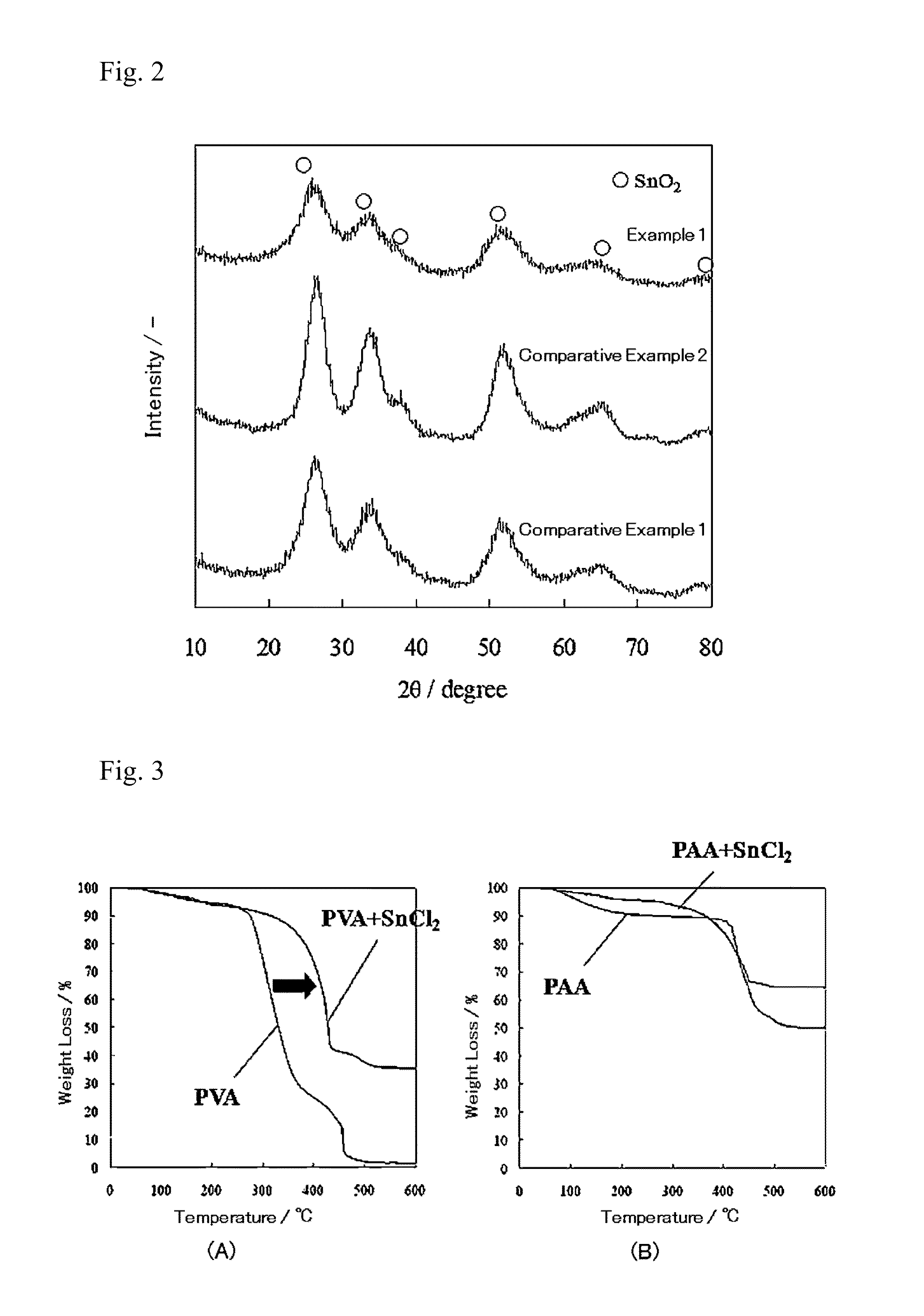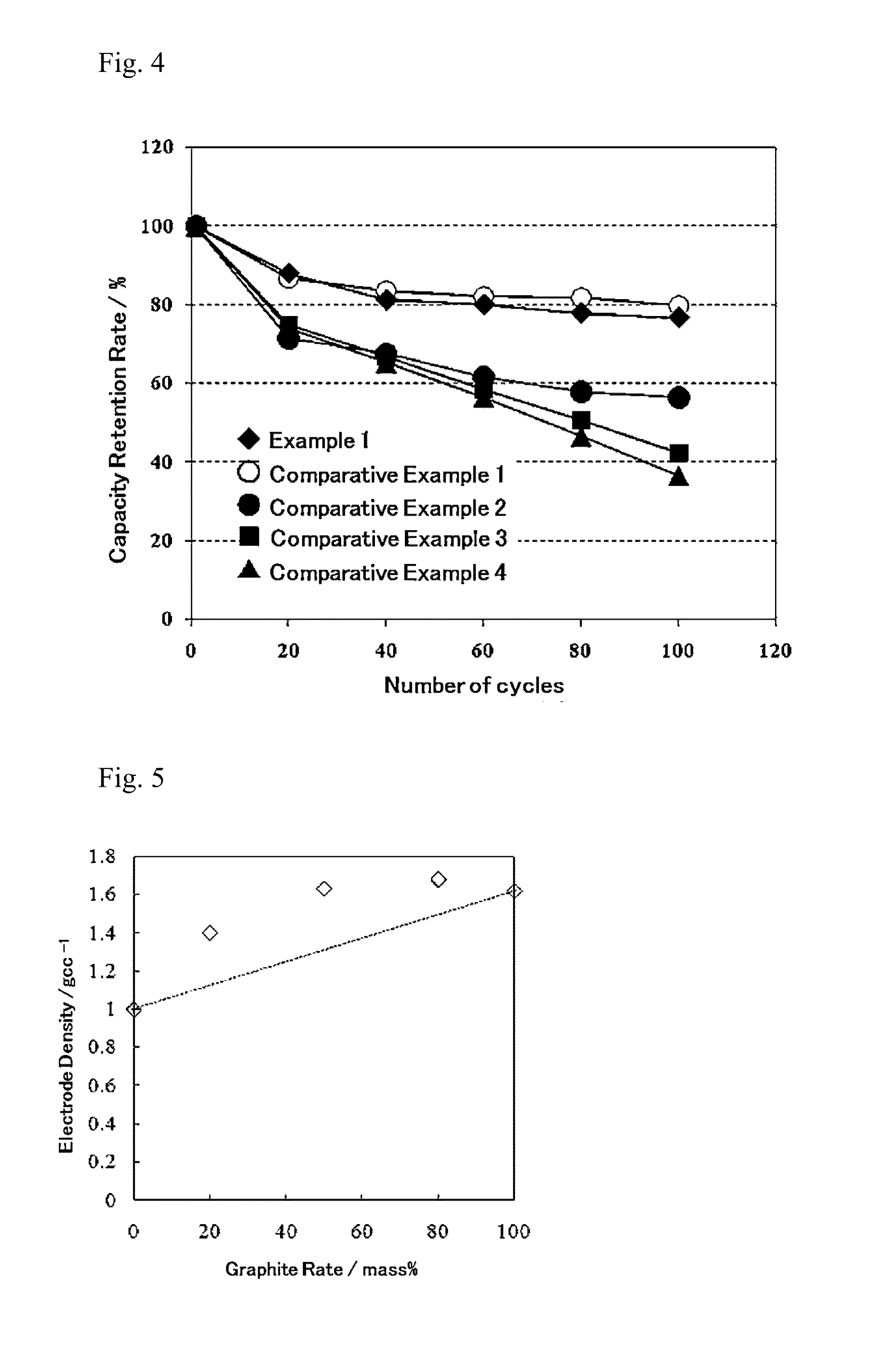Negative electrode active material, method for producing the negative electrode active material, and lithium ion secondary battery using the negative electrode active material
a negative electrode and active material technology, applied in the manufacture of final products, non-metal conductors, cell components, etc., can solve the problems of reducing discharge capacity, reducing discharge capacity, and remarkably large volume expansion of sn in accordance with occlusion of lithium, so as to reduce initial irreversible capacity, improve discharge capacity, and reduce the bulk density of negative electrode active material
- Summary
- Abstract
- Description
- Claims
- Application Information
AI Technical Summary
Benefits of technology
Problems solved by technology
Method used
Image
Examples
example 1
[0124]To an inner cylinder of a reactor shown in FIG. 1 of JP 2007-160151 A, which is composed of a pair of outer and inner concentric cylinders with through-holes on the side surface of the inner cylinder and a sheathing at the aperture of the outer cylinder, a solution in which 5.64 g of SnCl2·2H2O is dissolved in 120 mL of water was introduced, and further, 0.56 g of polyvinyl alcohol, 3.2 mL of hydrochloric acid at the concentration of 2 M, and 1.61 g of Ketjen Black (trade name: Ketjen Black EC600J, manufacturer: KetjenBlack International, initial particle diameter: 34 nm, pore size: 4 nm, specific surface area: 1520 m2 / g, amount of oxygen 6.1 mmol / g) were introduced, and the inner cylinder was rotated for 300 seconds so that centrifugal force of 70000 kgms−2 was applied to the reaction solution, and SnCl2·2H2O, polyvinyl alcohol and Ketjen Black were made to be dispersed. The charge at the time of reaction of SnCl2·2H2O and Ketjen Black was SnO2:Ketjen Black=70:30 at a mass ra...
example 2
[0146]In the inner cylinder of the reactor used in Example 1, a solution in which 5.64 g of SnCl2·2H2O and 0.56 g of polyvinyl alcohol were dissolved in 120 mL of water was introduced, and further, 3.2 mL of hydrochloric acid at the concentration of 2 M and 1.62 g of Ketjen Black (trade name: Ketjen Black EC600J, manufacturer: Ketjen Black International, initial particle diameter: 34 nm, pore size: 4 nm, specific surface area: 1520 m2 / g, amount of oxygen 6.1 mmol / g) were introduced, and the inner cylinder was rotated for 300 seconds so that centrifugal force of 70000 kgms−2 was applied to the reaction solution, and SnCl2·2H2O, polyvinyl alcohol and Ketjen Black were made to be dispersed. The rotation of the inner cylinder was stopped, and 56.4 mL of NaOH aqueous solution at the concentration of 1 M was added to the inside of the inner cylinder and the inner cylinder was rotated for 300 seconds so that centrifugal force of 70000 kgms−2 was applied to the reaction solution again. In t...
example 3
[0148]The procedure of Example 2 was repeated except that aspartic acid was used in place of glutamic acid in the same amount as glutamic acid.
PUM
 Login to View More
Login to View More Abstract
Description
Claims
Application Information
 Login to View More
Login to View More - R&D
- Intellectual Property
- Life Sciences
- Materials
- Tech Scout
- Unparalleled Data Quality
- Higher Quality Content
- 60% Fewer Hallucinations
Browse by: Latest US Patents, China's latest patents, Technical Efficacy Thesaurus, Application Domain, Technology Topic, Popular Technical Reports.
© 2025 PatSnap. All rights reserved.Legal|Privacy policy|Modern Slavery Act Transparency Statement|Sitemap|About US| Contact US: help@patsnap.com



